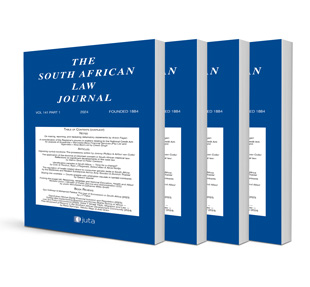Abstract
When the Mineral and Petroleum Resources Development Act 28 of 2002 (‘MPRDA’) came into operation, it introduced a new regulatory regime for the South African mining industry. The Act brought an end to a combined system of privately held and state-held mineral rights and statutory authorisations to prospect and mine, and replaced it with a state-controlled system of rights to minerals. This new regulatory system aims to achieve a number of complex, interrelated and, at times, conflicting objectives. One of the objectives of the MPRDA, and an essential component of an investor-friendly environment, is provision of mineral tenure security in respect of prospecting and mining. Following the traditional intersection between private law and public law in South African mineral law, this broad regulatory concept encompasses aspects from both branches of the law. In particular, in South African law, registration and enforceability of rights to minerals, as aspects of mineral tenure security, are closely associated with the rules of private law. The text of the MPRDA seems to foster this association with its express typification of prospecting rights and mining rights as limited real rights. This article evaluates the proposition that, in the current regulatory regime, rights with a proprietary overlay provide better protection (i e mineral tenure security) and temper investors’ fears about insecure rights. The article investigates whether, as far as registration and enforceability of rights are concerned, the private-law nature of rights continues to strengthen mineral tenure security.
